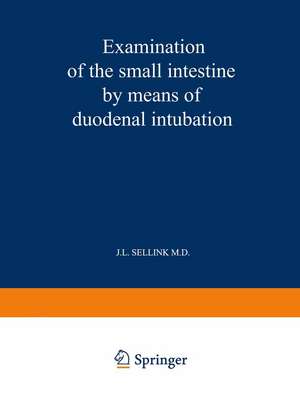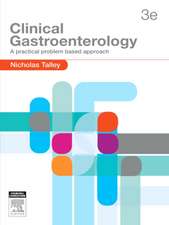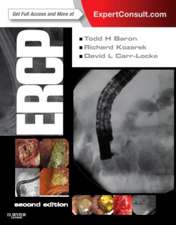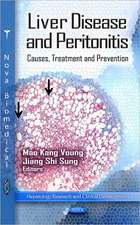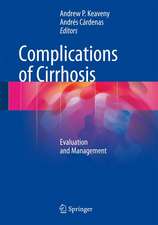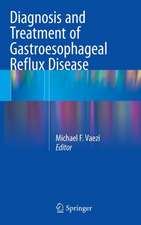Examination of the Small Intestine by Means of Duodenal Intubation
Autor J. L. Sellinken Limba Engleză Paperback – 1971
Preț: 367.28 lei
Preț vechi: 386.61 lei
-5% Nou
Puncte Express: 551
Preț estimativ în valută:
70.29€ • 73.11$ • 58.03£
70.29€ • 73.11$ • 58.03£
Carte tipărită la comandă
Livrare economică 14-28 aprilie
Preluare comenzi: 021 569.72.76
Specificații
ISBN-13: 9789020702972
ISBN-10: 9020702971
Pagini: 160
Ilustrații: VII, 148 p. 90 illus.
Dimensiuni: 210 x 279 x 8 mm
Greutate: 0.38 kg
Ediția:Softcover reprint of the original 1st ed. 1971
Editura: SPRINGER NETHERLANDS
Colecția Springer
Locul publicării:Dordrecht, Netherlands
ISBN-10: 9020702971
Pagini: 160
Ilustrații: VII, 148 p. 90 illus.
Dimensiuni: 210 x 279 x 8 mm
Greutate: 0.38 kg
Ediția:Softcover reprint of the original 1st ed. 1971
Editura: SPRINGER NETHERLANDS
Colecția Springer
Locul publicării:Dordrecht, Netherlands
Public țintă
ResearchCuprins
I Introduction.- II History.- III Anatomy.- IV Physiology.- 1. Innervation of the small intestine.- 2. Tone and peristalsis.- 3. Function of the pyloric muscle.- 4. Influence of nutrients on gastric emptying time and rate of transit through the small intestine.- 5. Influence of the volume of the contrast meal on the gastric emptying time.- 6. Effect of the absorption of fluids from the contrast column in the distal ileum.- 7. Obstructions in the small intestine.- V The Contrast Medium.- General considerations.- 1. Sedimentation of the contrast medium.- 2. Flocculation of the contrast fluid.- 3. Segmentation of the contrast column.- 4. Additives to the contrast medium for the purpose of improving stability and adhesion.- 5. Relationship between viscosity, particle size and adhesion of the barium suspension.- 6. Specific gravity of the contrast fluid.- 7. Comparative studies with different brands.- 8. Contrast media other than barium sulfate.- VI Methods of Examination.- 1. ‘Physiological’ examination of the small intestine.- 2. Single administration of the contrast medium.- 3. Fractional administration of the contrast medium.- 4. Administration of cold fluids with the contrast medium.- 5. Administration of the contrast medium through a tube directly into the small intestine (enteroclysis).- 6. Retrograde administration of the contrast fluid.- 7. Combined methods of examination.- 8. Laxation before the examination and the use of the right lateral position.- 9. Use of drugs to accelerate transit.- VII Review and Conclusion.- VIII The Enteral Contrast Infusion.- 1. Preparation of patients.- 2. Duodenal intubation.- 3. Administration of the contrast medium.- 4. Radiological examination.- 5. Supplementary administration of air or water.- IX discussion of Patients.- 1.General considerations.- 2. Patients.- X Summary and Conclusion.
